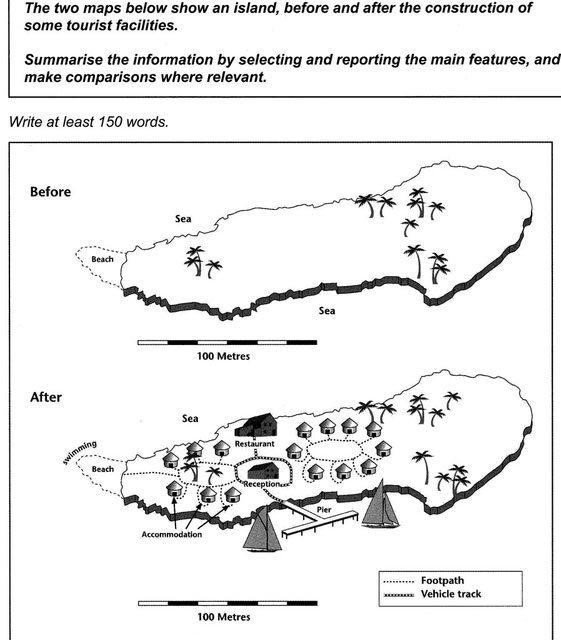In this guide, we’ll go over everything you need to know about IELTS Writing Task 1 map questions, covering essential topics such as the types of map questions, how to structure your answers, and important vocabulary.
Read MoreIn IELTS Academic Writing Task 1, you may need to describe graphs, charts, or tables that present data.
Read MoreIn the IELTS General Training Writing Task 1, you may be required to write an informal letter. This guide will help you structure your response, use natural and conversational language, and improve your grammar and vocabulary to achieve a high band score.
Read MoreWriting a formal letter is a crucial skill for the IELTS General Training Writing Task 1. This guide will help you structure your response, use appropriate language, and improve your grammar and vocabulary to achieve a high band score.
Read MoreIn Part 1 of the IELTS Writing test, you may be asked to describe a process. While process questions are less common than charts or graphs, they do appear occasionally. Fortunately, process questions are generally easier to answer, though many people overlook preparing for them. This is a missed opportunity, as it doesn’t take long to become familiar with these types of questions and learn how to respond effectively.
Read MoreIn IELTS Writing Task 1, you are often asked to describe charts, graphs, or tables. To score well, you need to accurately describe changes in data over time or compare different trends. One of the most effective ways to do this is by using a variety of vocabulary to describe changes. This blog will help you understand how to use verbs and nouns from the table above to describe upward and downward trends, fluctuations, and stabilization in data.
Read MoreThe Future Perfect Continuous tense describes an action that will have been happening for a certain period of time at a specific point in the future. This tense allows you to emphasize the duration of an ongoing activity up to a particular moment.
Read MoreThe Present Perfect Continuous tense is vital for describing actions that began in the past and are still continuing, or have recently stopped but have a present result. It’s a tense that frequently comes up in the IELTS Speaking test when you're asked about activities that you have been doing recently, changes, or habits that have been ongoing.
Read MoreThe Past Perfect Continuous tense is used to describe actions that were ongoing in the past before another action or time. For IELTS Speaking or Writing, mastering this tense will help you describe past experiences in a more sophisticated way, which can boost your score in the grammar and coherence categories.
Read MoreIn IELTS Speaking Part 2, you're given a cue card with a specific topic, and after one minute of preparation, you need to speak for up to two minutes. This part of the test assesses your ability to speak fluently and coherently. But one common concern for many candidates is: what happens if you go off-topic?
Read MoreIn the 2024 IELTS Speaking test, Part 3 focuses on a two-way discussion where you’ll be asked more abstract and complex questions related to the topic from Part 2. The aim is to assess your ability to discuss ideas, analyze issues, and express opinions on broader subjects. This part of the exam gives you the opportunity to showcase your critical thinking, depth of knowledge, and fluency in handling more challenging themes.
Read MoreIn this article, we’ll explore some of the key themes and practice topics for IELTS Speaking Part 2 in 2024. These topics will help you prepare effectively and build confidence for the exam.
Read MorePracticing these 100 Future Perfect questions for IELTS Speaking will help you build fluency and confidence when discussing future actions and plans. The future perfect tense is a powerful tool for expressing what you anticipate completing at specific points in the future, which can be useful in many IELTS Speaking contexts.
Read MoreUsing these 100 past perfect questions in your IELTS speaking practice will help you feel more comfortable with this tense and strengthen your ability to express complex ideas. Regular practice with such questions can also improve your fluency and confidence in real IELTS speaking situations.
Read MoreThe Future Continuous tense is used to describe actions that will be happening at a specific point in the future. It’s a crucial tense to understand for the IELTS Speaking test, especially when talking about future plans or predictions. Practicing with future continuous questions will help you communicate fluently when discussing upcoming activities or events.
Read MoreBy regularly practicing with these questions, you will gain confidence in discussing past events and situations, which is crucial for your IELTS Speaking exam success!
Read MoreThese 100 questions in the present continuous tense are designed to help you practice for the IELTS Speaking test. As you go through them, focus on forming complete, grammatically correct sentences to improve fluency and accuracy. Happy practicing!
Read MoreIn an IELTS Discussion essay, you are required to present two opposing viewpoints on a specific topic and then provide your own opinion. This type of essay assesses your ability to discuss multiple perspectives while articulating your stance clearly.
Read MoreBy following this structure and approach, you'll be well-prepared to write a high-scoring Cause and Solution essay for IELTS Writing Task 2.
Read MoreIn this blog, we will provide a step-by-step guide for effectively addressing each of these question types. Whether you're preparing for your first attempt or looking to refine your skills, this comprehensive approach will help you navigate the complexities of IELTS Writing Task 2 with confidence.
Read More



















